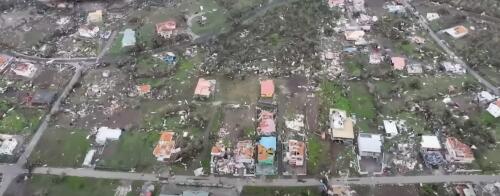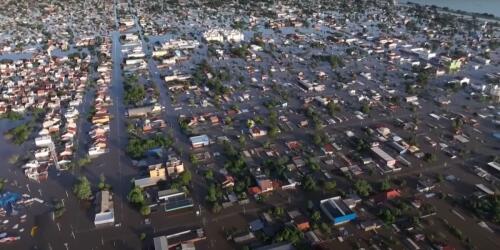ondate di calore
The weekly round-up on the climate crisis and data on carbon dioxide levels in the atmosphere. For the first time in the Atlantic Ocean a category 5 hurricane formed at the beginning of the summer and this is not a good sign for the rest of the year and our immediate future.This is the case of Beryl, the first major hurricane of a season that will arrive until late November, which went from tropical depression to storm and then to hurricane in the space of 48 hours.The speed with which Beryl transformed into a Category 5 hurricane is a bad sign for the Atlantic hurricane season which, fueled by increasingly rising ocean temperatures, is becoming more dangerous and unpredictable.So much so that, how underlines Simone Fant on Renewable Matter, some scientists are proposing to add an additional category – category 6 – to measure the intensity of hurricanes. “This early-season storm activity is breaking records set in 1933 and 2005, two of the most in...
The weekly round-up on the climate crisis and data on carbon dioxide levels in the atmosphere. Death and devastation.Heavy rains in southern Brazil they provoked massive floods and landslides in Rio Grande do Sul, the southernmost state of Brazil.More than half of the state's 497 cities were affected by the storms, with roads and bridges destroyed in several areas.The storms also caused landslides and the collapse of a hydroelectric dam near the town of Bento Gonçalves, killing 30 people.Authorities said a second dam in the area was also at risk of collapsing due to rising water levels. “It is the fourth environmental disaster of this type in a year, after the floods of July, September and November 2023.Flooding across the state has surpassed that recorded during the historic deluge of 1941,” remember AP.The Guaiba River, which runs through the city of 1.4 million inhabitants, he reached the record level of 5.3 meters. “Residents of several...
by Andrew Stroehlein (from Daily Vrief, Human Rights Watch newsletter) As the effects of global warming become more and more evident, these days the heat has hit the front pages of newspapers around the world like never before. In Saudi Arabia, this month, more than 1300 people died during the Hajj, the annual pilgrimage to Mecca.Heat stress was a major factor contributing to the death toll, with temperatures topping 50 degrees. In the United States, approximately 65 million people are facingheat alert, as another "heat bubble" pushed temperatures in some locations above 50 degrees.There are more heat waves in the country deadly hurricanes, floods and tornadoes strung together and heat-related deaths they are on the rise, with over 2300 in 2023. In both places - Saudi Arabia and the United States - the human damage was exacerbated by authorities who did not are adequately prepared or what they refused to address long-standing social issues, ignoring that some peo...
The weekly round-up on the climate crisis and data on carbon dioxide levels in the atmosphere. A “silent killer”.This is how doctors defined heat waves because they claim many more victims than most people realize.And they have impacts on bodies and mental health. According to the United Nations, 2.4 billion people worldwide are under threat by “increasingly severe heat waves, caused largely by a fossil fuel-induced climate crisis.” A study recently published on Nature Medicine found that in 2023 – the warmest year on record although scientists they predict that 2024 will soon take its place – heat waves, worsened by carbon dioxide pollution, have killed almost 50 thousand people in Europe.And the death rate would have been 80% higher if people had not adapted to rising temperatures over the past two decades.This means that efforts to adapt societies to heat waves are effective, explains to Guardian Elisa Gallo, environmental epid...
The weekly round-up on the climate crisis and data on carbon dioxide levels in the atmosphere. These days a heat wave is crossing three continents:Europe, Asia, North America.Extreme temperatures are being recorded across much of the Earth's northern hemisphere.The month of June this year was the hottest so far recorded. The return of El Niño, the cyclical phenomenon that causes the surface of the central-eastern Pacific Ocean to warm, contributes to pushing up the planet's temperatures. There's a good chance that 2023 will become the warmest year on record.But even if it doesn't reach first place, displacing 2016, we are certain that it will be among the top positions.The ten hottest years they are concentrated in the last decade.It is not a coincidence, it is one of the many evidences of the reality of anthropogenic global warming. 🌡️ Extreme levels of heat are affecting large parts of the Northern Hemisphere ⚠️ Exceptionally high temperatures are breaking records in places and dang...




